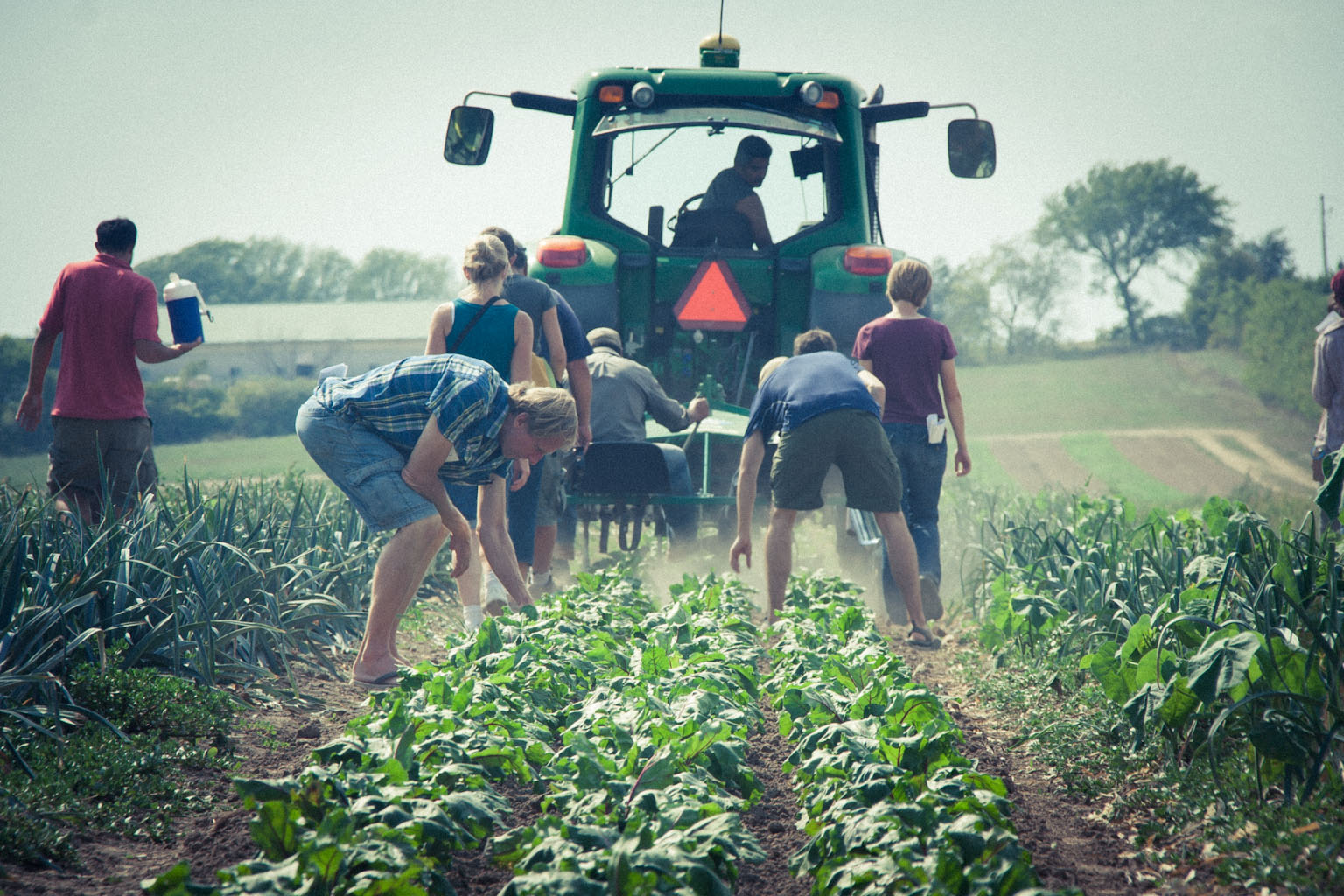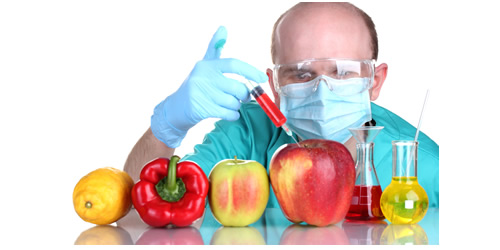How Young Farmers Are Revolutionizing Agriculture

Young, college-educated farmers who care deeply about the environment and providing nutritious food are the new face of American agriculture
The landscape of American farming is changing. For one, farmers are getting older. In 1982, the average American farmer was 51. In 2012, the average farmer was 58. But you won’t see many greybeards selling at your local farmers market, or delivering to nearby restaurants.
The biggest news in food today is a rising tide of young farmers. Many are city-born and college educated, and they’re changing the way America eats, one field and one pasture at a time.
“We saw a back-to-the-land movement in the 1960s and 1970s that was a little like this,” said Zach Wolf, a 30-something farmer and director of the Growing Farmer Initiative at the Stone Barns Center for Food & Agriculture in Pocantico Hills, New York. “This feels more thoughtful, more mainstream, more prepared. Young farmers today are environmentally aware and socially active. Sustainability isn’t an ideal; it is a life they want to live and to help others live.”
Many observers trace this trend back to the 2007 book The Omnivore’s Dilemma. Author Michael Pollan traced the origins of four meals: a McDonald’s lunch, a dinner from Whole Foods market, another using ingredients from a small Virginia farm, and a feast of items he foraged and hunted.
The book was a wake-up call to the problems associated with Big Agriculture, including reliance on petroleum, environmental and biologic degradation, obesity, poor nutrition, and bland, boring food.
Following Pollan’s lead, there appears to be a reversal in the traditional movement of people from farm to city, rural to urban. In 1910, there were about 6.4 million farms in the United States. In 2010, there were about 2.2 million farms as one-time farmers moved to town. Today’s new farmers are largely city dwellers who have moved back to the country. And they are overwhelmingly young.
In Maine, farmers under the age of 35 are up by 40 percent, according to John Rebar, executive director of the University of Maine Cooperative Extension. On a national basis, the proportion of young farmers is up by 3 percent.
The fastest growing segment of farmers is those older than 65, according to the U.S. Department of Agriculture Census of Agriculture. But the second fastest growing segment is those ages 25 to 34.
Farming isn’t an easy life. It never has been and probably never will be, Wolf said.
“Financially, farming is more risky than a lot of other professions,” he said. “But there are changes that are making farming more economically viable today, especially for small farmers.”
The biggest change is in demand. Organic has been a factor in farming and food sales for years. But organic has moved from the fringe of consumer buying to center stage. Almost every supermarket now sells organic produce, meat, poultry, and dairy products.
Organic sales surged 11.5 percent in 2013, hitting a record $35 billion, according to the Organic Trade Association. Most families — 81 percent — choose organic food at least some of the time.
Whole Foods built a national food chain based on high-end organic products and earned the nickname “whole paycheck” in the process. When mega discounter Walmart expanded its organic section in 2014, it promised to bring organic prices down to nonorganic levels.
Scientific studies of the nutritional benefits of organic versus nonorganic foods come down on both sides of the issue. Consumers, particularly those in their 20s through 40s, don’t seem to care. They mostly want better food, produced by farmers who care about the land and the environment.
“Consumers are starting to value food in a different way,” Wolf said. “They want to eat food with greater quality and integrity. They want to eat food that is raised sustainably. That brings a higher price tag. A growing number of people are willing to pay more to eat higher quality food.”
Traditional agribusinesses aren’t worried. The most productive American farms are still huge corporate organizations using massive planting and harvesting machines. Their appetites and budgets for hybrid and genetically modified seeds, synthetic fertilizers, and pesticides are huge.
But not everyone wants to eat a tomato that has been bred for its color, shape, and ability to withstand long-distance shipping, rather than for taste. Agricultural chemicals lend a gloss to apples and leave cauliflowers unmarked by aphids. But those same chemicals can leave a residual taste. Proponents say that a fresh, organically grown pepper or cucumber has a depth and purity of flavor that industrial agriculture can’t match.
“I want my carrots to taste like carrots — sweet and crunchy and satisfying — something my kids ask for when they want a snack,” said Josh Cohen, a young farmer in the Applegate Valley near Medford, Oregon, during a farm tour in 2014. “Our vision is to make a living raising the kind of tasty, nutritious food we want to eat. People don’t have to subsist on the stuff you get at the supermarket. Food can be better than that.”
The new generation of farmers has grown up in an era that values personal integrity and involvement. Environmental issues are key because an unhealthy environment makes for unhealthy people. Climate change isn’t a debate; it’s a global problem that needs local change. Technology can improve almost anything, and collaboration is a way of life.
“Young farmers bring a whole new mindset to traditional difficulties,” Wolf said. “Almost all of us are college-educated, which creates a different attitude toward learning and solving problems. Most of us didn’t come from farming families, so we had to learn through apprentice programs or some kind of hands-on training.”
Wolf believes today’s farmers are more collaborative than their parents or grandparents, and that teams are better at solving problems than individuals. “We’re more business savvy. You don’t become a farmer to get rich. You do it to earn a living in a way that intimately connects work and life. That connection gives you an incentive to be more efficient,” he said.
Farmers have long been early adopters of technology. From steam engines in the 19thcentury to drip irrigation, GPS, laser-guided field contouring, Internet technology, cell phones, and more, farmers have been leaders in turning technology into tools. However, most of those tools are scaled for industrial farms that encompass thousands or tens of thousands of acres.
When Cohen needed a larger cooler to store produce between field and distribution, the only available equipment was far too large and expensive. So he bought an old walk-in cooler and replaced the broken cooling unit with a home air conditioner. And he used a trick passed on by another small farmer to fool the home unit into chilling the entire cooler to just above freezing.
“Farmers are hackers because you just can’t buy the kinds of things we need off the shelf,” he said. “Even if you could afford it, the stuff just isn’t there. So we hack it ourselves.”
Farm Hack is an online community that develops everything from remote monitors for compost piles to automated watering systems that use wireless sensors to check soil moisture and control irrigation. There are bike-powered washers that clean root vegetables, gadgets that let farmers lie down while they weed fields, and electric fences controlled by a text message.
Stone Barns has a similar project called Virtual Grange. Farmers, design engineers, and technologists talk about everything, including novel ways to finance farm purchases, leasing, and new tools for small farms. One of their first projects is a small electric tractor, an alternative to converting lawn tractors for small farm use.
Food+Tech Connect extends a similar collaborative approach to using data and technology to improve the entire food system, from farm to restaurant to consumer. Founder Danielle Gould says that we are at the beginning of the greatest transformation of our food system since the Green Revolution. An explosion of startups is disrupting the ways food is produced, distributed, sold, and consumed.
“We are seeing a change in attitude toward food and farming,” Wolf said. “There is a real reevaluation of the value of farming and the contributions farmers make to the culture and the world we live in. New farmers today aren’t running from the city; they are creating a symbiosis where urban life and farm life depend on each other.
“All those charming rural landscapes people so love are created and maintained by farmers. Farmers who are also feeding them,” he added. “We are not just seeing a change in the way we eat; it’s a real revolution in the way we view and manage land across the country.”
Credit: HealthLine News




